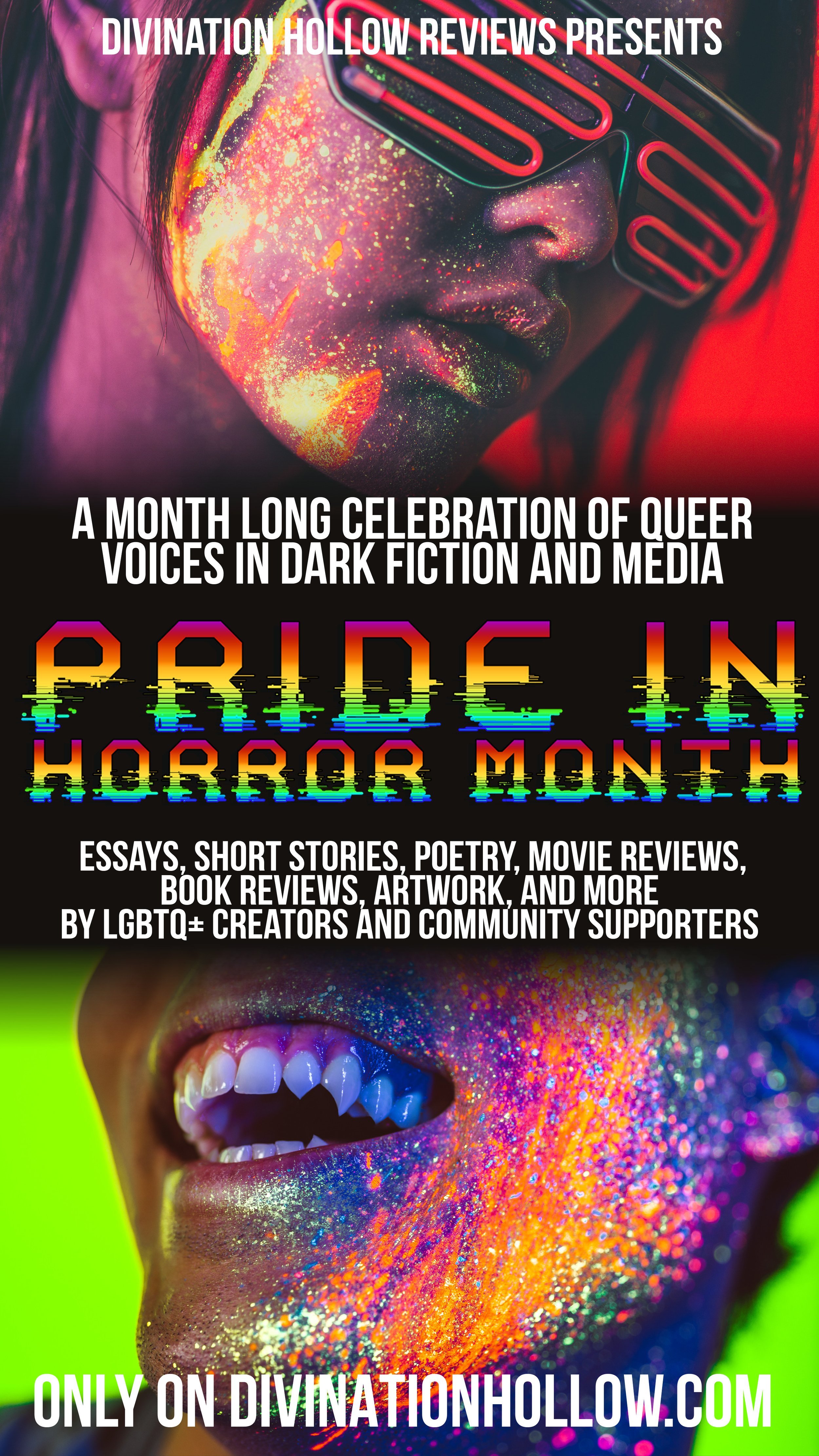PIHM Essay: The Id and The Superego, Or How Aronofsky’s Black Swan Inadvertently Demonises Lesbianism
Please note, this essay contains spoilers for Black Swan
Darren Aronofsky’s Black Swan (2010) is an iconic dance horror film, set around the production of Swan Lake, and the principal dancer Nina’s descent into madness. The film is known for its pseudo lesbian themes, but how well does the lesbian representation in Black Swan hold up?
The central characters in Black Swan are Nina, an innocent ingenue who is infantilised by her mother, and Lily, a confident dancer who is a newcomer to the studio. Immediately, they are separated by colour. Nina is, for the majority of the film, dressed in white, light pink, and other light colours, while worldly Lily is dressed in black. This immediately differentiates the characters from each other, showing them as binary opposites. However, this also changes the way we perceive them. White and pink are colours we associate with innocence and purity, whereas black is a colour we usually associate with darkness, evilness and power, already telling the audience what to think of the characters. Lily is immediately portrayed as a distraction or an interloper into Nina’s life, whereas Nina is shown to be infantilised throughout the entire piece. It is only once she starts hanging out with Lily that she starts wearing darker clothes, showing the distortion in her identity.
Lily is shown to be a bad influence throughout the narrative; she encourages Nina to break free from her mother and takes her to a bar, getting her drunk and giving her drugs before encouraging her into a sexual encounter with her. Later on, Lily tries to take the role of the Black Swan from Nina, however, it is important to note that much of Lily’s questionable behaviour is only seen from Nina’s perspective. While Lily does take Nina to a bar, she willingly gets drunk, and although she is uncomfortable, she does take the tablet from Lily. The sexual encounter she experiences and blames for making her late was completely imaginary, and Nina later imagines Lily attempting to steal her role, leading to their ‘fight’. While the narrative pushes Lily as a negative influence on Nina, her only negative actions are from the perspective of Nina’s paranoia, not by anything based in the reality of the film.
Due to their colour blocking and the perception of their personalities, Nina and Lily could be seen to represent the ego and the id. In Freudian theory, there are three parts to every personality. The id seeks pleasure and focuses on primal, basic instinct; the superego strives to be the perfect moral conscience, and the ego has to mediate between both (McLeod). At the film’s introduction, Nina is the physical embodiment of the superego; she is constantly striving for perfection, a trait emphasised by her mother who infantilises her, and embodied by the role of the White Swan. The representation of the id, Lily, comes into her life and starts ‘corrupting’ her, the timing of which aligns with Nina getting the dual role. The Black Swan role brings about stress and a return to base instinct, emphasised by director Thomas instructing Nina to masturbate to find the sexuality of the role. In the climax of the film, Nina dances both roles and the film ends with her declaring that she was ‘perfect’ before the film dissolves into white. The battle between the id and superego within Nina herself is resolved, and she ends the film as the ego, the perfect balance between the two.
Whilst Nina is explicitly shown to have a lesbian experience within the film, it could be argued that it is not lesbianism demonised within the film, but the wider female sexual experience. The character of the Black Swan is strongly linked with sex; Nina is encouraged to masturbate to ‘find the character’ and she starts fully developing into this character after the imagined lesbian experience with Nina. This sequence is shown to the audience as not being real, as we see Lily’s face briefly change to that of Erica’s, Nina’s mother, as well as Lily denying that it happened and decrying it as a wet dream. It could be read that sex with Lily is an unconscious expression of a desire Nina cannot allow herself to feel, as expressing her sexuality is something Nina is shown to be uncomfortable with throughout the film. Nina later demonises this encounter herself, blaming Lily for making her late for rehearsal, as she is unable to come to terms with surrendering herself to this. She is unable to escape the strict boundaries of her life, despite everything she does, leading her life to spiral out of control. Nina seems uncomfortable with Lily’s sexuality as well as her own, especially her sexual confidence, even though we are only shown Lily engaging in heterosexual interactions.
Arguably, it is not just sexuality demonised within the text, as Nina is later shown devolving to further base instincts surrounding the Black Swan character. When she feels threatened by imaginary-Lily attempting to take the role from her, Nina reacts on instinct to stab what she feels threatened by, Lily, or the representation of the id. However, Nina has gone too far and is unable to pull herself back into the superego role, eventually becoming one with the id as she transforms into the Black Swan during her dance, and ‘dying’ as the ego. Interestingly, the film does not explicitly tell us whether Nina dies. The film fades to white as she breathes the last words of the script, however the actress who portrayed Nina, Natalie Portman, has gone on record saying that she considered it to be a metaphorical death of killing the little girl Nina was, rather than a literal death (IMDB). Either way, this can be seen as a representation of the problematic ‘bury your gays’ trope, in which LGBTQ+ characters meet unhappy endings at a rate higher than heterosexual characters (Jacobs). Whilst it could be argued that in Black Swan no character gets a ‘happy ending’, it is notable that the audience is only shown two characters as being killed or dying, and it is the two characters shown to have a lesbian sexual experience. Whilst Lily is shown to have been a hallucination who was stabbed, her corpse is strongly shown, and the film’s ending scenes portray either a literal or metaphorical death for Nina.
While Black Swan was lauded upon release, a retrospective after 15 years indicated that the lesbian representation in the film does not hold up well. Nina and Lily are both demonised within the text for their lesbian behaviour, and Nina’s life devolves after a lesbian encounter, eventually leading in what is presumed to be her death. Whilst the film is a good example of the dance horror subgenre, it still plays to problematic tropes such as the ‘bury your gays’ trope.
Works Cited
IMDB. https://www.imdb.com/title/tt0947798/trivia/?ref_=tt_ov_ql_3 . Accessed 29 April 2025.
Jacobs, Jason. “Media portrayal of LGBTQ people.” Wikipedia, https://en.wikipedia.org/wiki/Media_portrayal_of_LGBTQ_people#%22Bury_your_gays%22 . Accessed 29 April 2025.
McLeod, Saul. “Id, Ego, and Superego.” Simply Psychology, 13 March 2025, https://www.simplypsychology.org/psyche.html . Accessed 29 April 2025.
About Sarah R. New
Sarah R. New (she/her) has been writing since she was 6. She specialises primarily in horror or fiction with horrific elements, but also writes speculative fiction and non-fiction. Her self-published travel memoir, The Great European Escape, was released in 2023, and her Gothic horror novella, Amissis Liberis, was published in 2024. Sarah lives in the U.K., but frequently travels internationally. She can be found on Bluesky, Instagram and Twitter under the username aldbera or at sarahrnew.wordpress.com.





